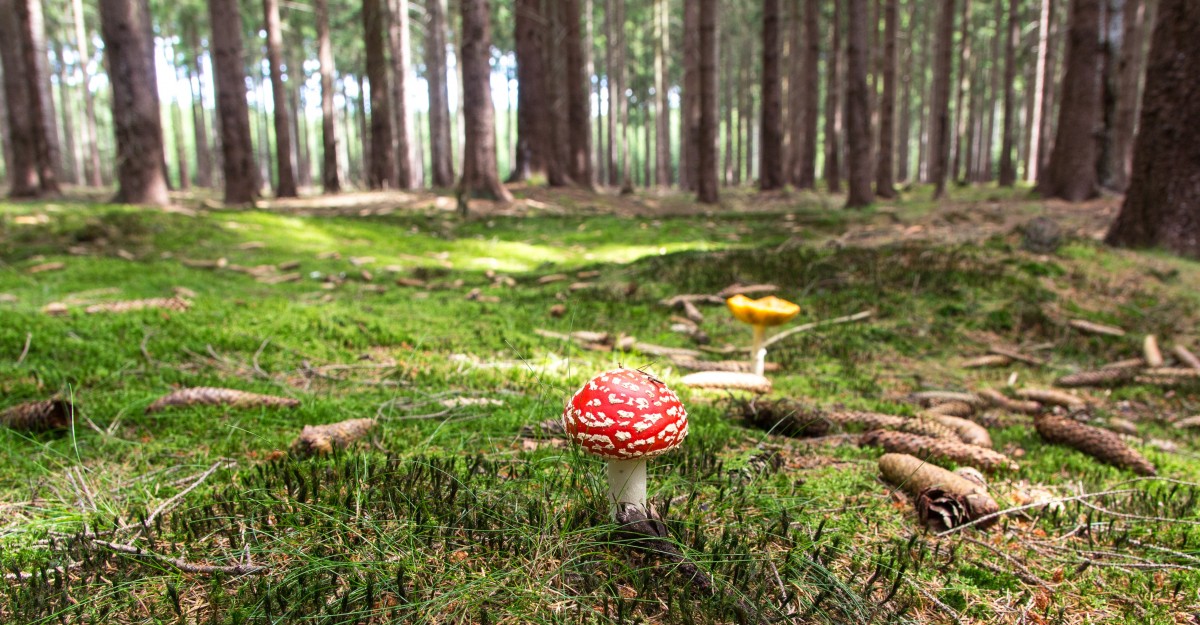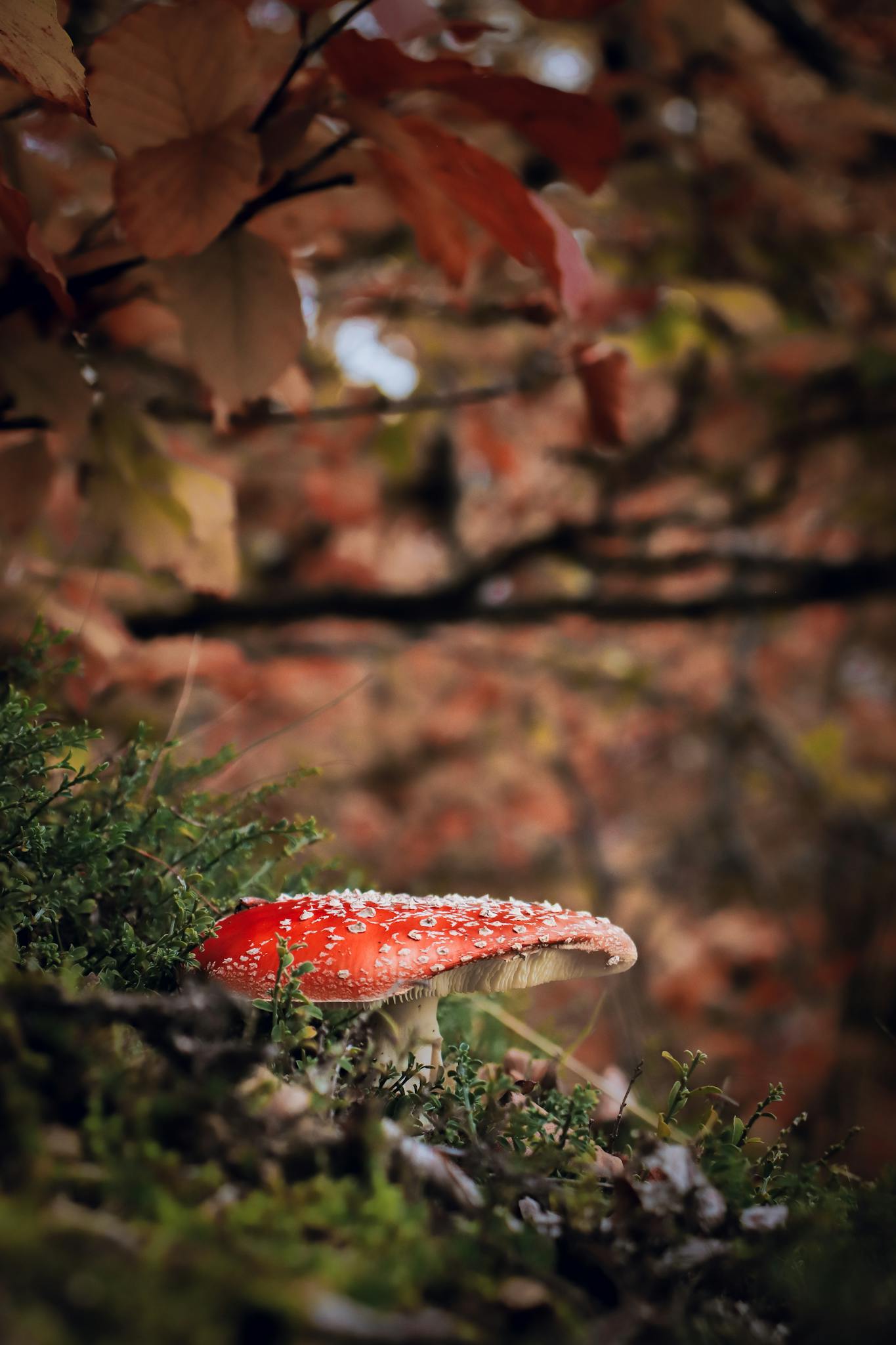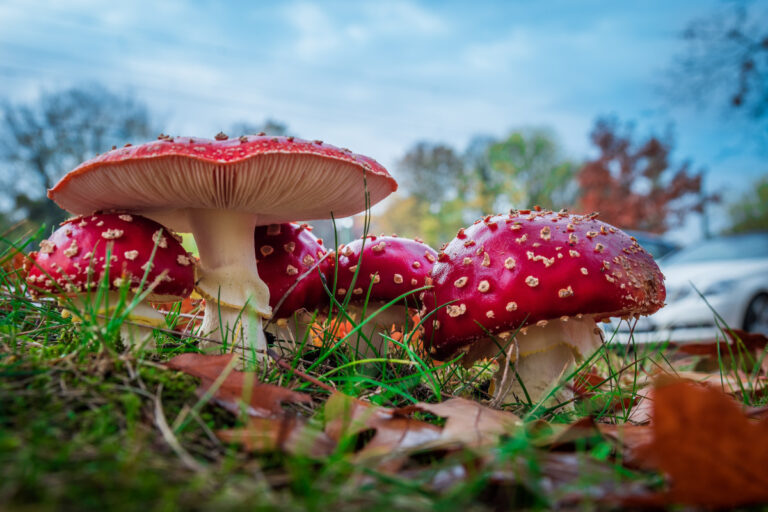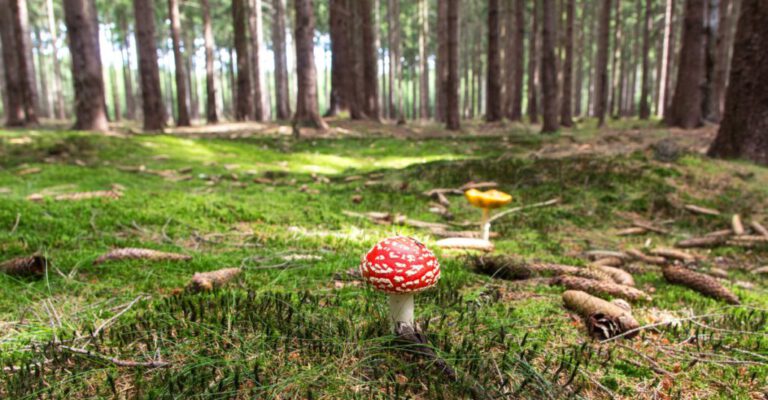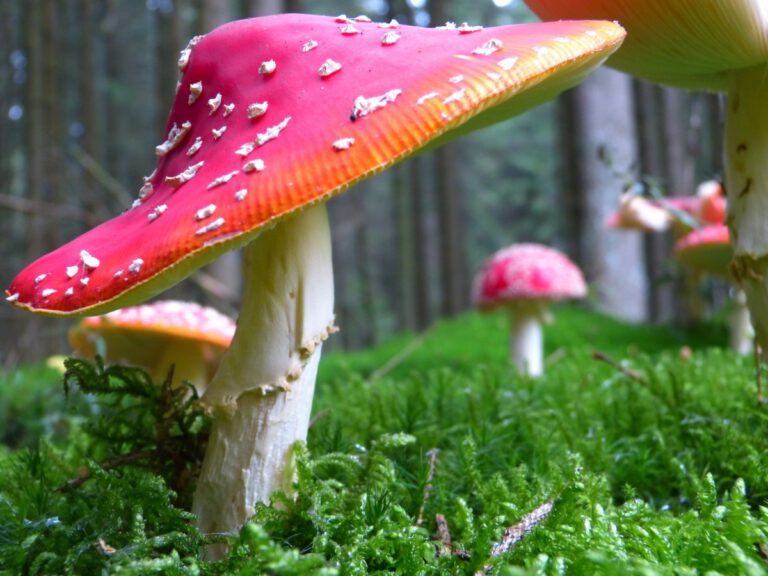This History of Amanita Muscaria in Europe
The History of Amanita muscaria in Europe: From the Stone Age to the Middle Ages
The red-and-white mushroom Amanita muscaria, also known as the fly agaric, has always caught human attention. Its bright colors stand out in the forest, and for thousands of years people in Europe have given it meaning, power, and stories.
Stone Age Beginnings
Archaeologists believe people in the Stone Age already knew this mushroom. While mushrooms do not leave fossils, old cave art and carved symbols suggest that early humans used plants and fungi in rituals. Some shapes look similar to the spotted caps of Amanita muscaria.
For hunter-gatherers, the mushroom grew in the same forests where they lived and hunted, especially under birch and pine trees. Many researchers think it was part of early shamanic practices. Shamans may have eaten it to enter altered states of mind, to heal, or to guide their people.
Ancient Traditions and Myths
Later, as tribes spread across Europe, stories and symbols of the mushroom grew. Some scholars even connect it with the ancient drink “Soma,” described in India’s Rigveda. Soma was said to give strength and visions, which fits with the effects of Amanita muscaria.
In Northern Europe, myths often spoke of a world tree, animals, and sky journeys. The red mushroom may have been linked with these myths as a sign of power and transformation. Its colors also gave it a role in fertility rituals and winter celebrations.
Norse and Germanic Culture
Among the Norse and Germanic peoples, the mushroom may have been used by both shamans and warriors. Some believe the fierce “berserkers,” who fought in wild rage, have eaten it before battle.
The myths of the gods also hold possible clues. Some stories connect the red mushroom with Thor’s hammer or with Odin’s battles. Drops of blood or sparks of fire in myths may be symbols for the mushroom growing on Earth.
The Middle Ages: Magic and Fear
With the rise of Christianity, old rituals with plants and mushrooms were often seen as dangerous or sinful. What had once been sacred was now called witchcraft. Amanita muscaria became a mushroom both feared and admired.
In fairy tales and folklore it often appeared as the seat of elves and fairies, or as a magical sign in the forest. Its red cap made it easy to imagine as part of another world. But people also feared it because of its effects. Strange visions or sickness after eating it could be seen as madness or even possession.
Still, in some regions folk healers used it in small amounts, for example in ointments for pain. In Slavic lands it stayed a mushroom of power, a bridge between the human world and the spirit world.
